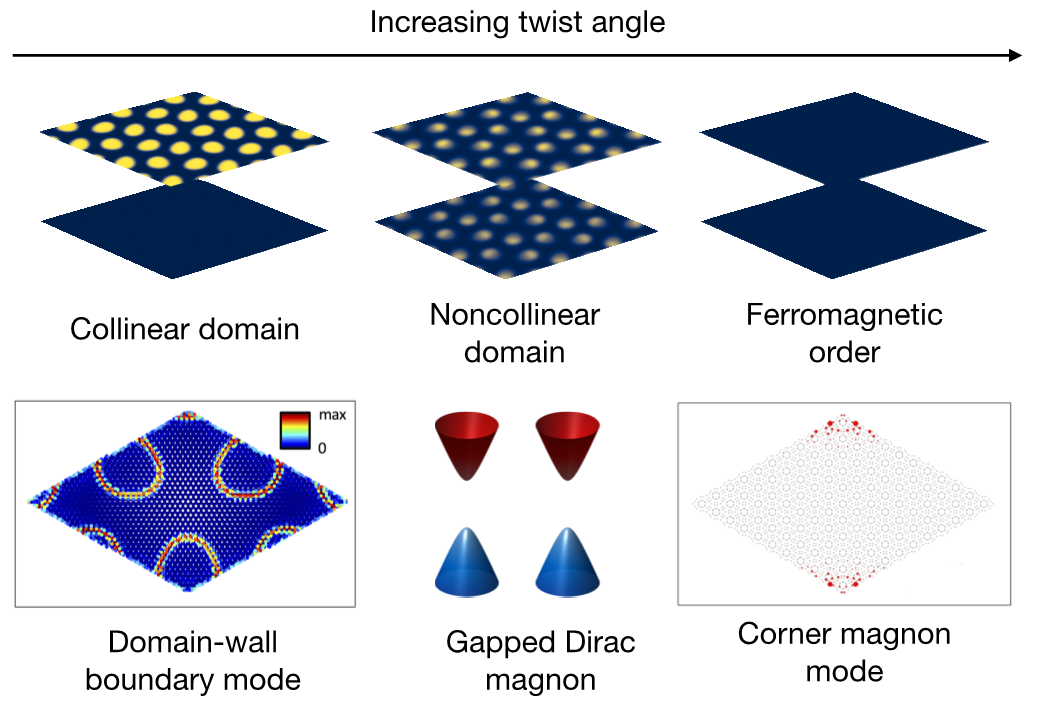주메뉴
- About IBS 연구원소개
-
Research Centers
연구단소개
- Research Outcomes
- Mathematics
- Physics
- Center for Underground Physics
- Center for Theoretical Physics of the Universe (Particle Theory and Cosmology Group)
- Center for Theoretical Physics of the Universe (Cosmology, Gravity and Astroparticle Physics Group)
- Dark Matter Axion Group
- Center for Artificial Low Dimensional Electronic Systems
- Center for Theoretical Physics of Complex Systems
- Center for Quantum Nanoscience
- Center for Exotic Nuclear Studies
- Center for Van der Waals Quantum Solids
- Center for Relativistic Laser Science
- Chemistry
- Life Sciences
- Earth Science
- Interdisciplinary
- Center for Neuroscience Imaging Research (Neuro Technology Group)
- Center for Neuroscience Imaging Research (Cognitive and Computational Neuroscience Group)
- Center for Algorithmic and Robotized Synthesis
- Center for Genome Engineering
- Center for Nanomedicine
- Center for Biomolecular and Cellular Structure
- Center for 2D Quantum Heterostructures
- Center for Quantum Conversion Research
- Institutes
- Korea Virus Research Institute
- News Center 뉴스 센터
- Career 인재초빙
- Living in Korea IBS School-UST
- IBS School 윤리경영


주메뉴
- About IBS
-
Research Centers
- Research Outcomes
- Mathematics
- Physics
- Center for Underground Physics
- Center for Theoretical Physics of the Universe (Particle Theory and Cosmology Group)
- Center for Theoretical Physics of the Universe (Cosmology, Gravity and Astroparticle Physics Group)
- Dark Matter Axion Group
- Center for Artificial Low Dimensional Electronic Systems
- Center for Theoretical Physics of Complex Systems
- Center for Quantum Nanoscience
- Center for Exotic Nuclear Studies
- Center for Van der Waals Quantum Solids
- Center for Relativistic Laser Science
- Chemistry
- Life Sciences
- Earth Science
- Interdisciplinary
- Center for Neuroscience Imaging Research (Neuro Technology Group)
- Center for Neuroscience Imaging Research (Cognitive and Computational Neuroscience Group)
- Center for Algorithmic and Robotized Synthesis
- Center for Genome Engineering
- Center for Nanomedicine
- Center for Biomolecular and Cellular Structure
- Center for 2D Quantum Heterostructures
- Center for Quantum Conversion Research
- Institutes
- Korea Virus Research Institute
- News Center
- Career
- Living in Korea
- IBS School
News Center
Topological moiré magnons via magnonic twistronics- A new perspective in twist engineering of 2D magnets - Twist engineering represents a novel approach to manipulating the magnetic properties of two-dimensional (2D) van der Waals magnets. This technique not only reveals distinctive magnetic structures, including nanoscale magnetic domain arrays but also has the potential to generate magnetic skyrmions—a phenomenon that holds the promise of advancing information technologies. These exciting possibilities have sparked a notable surge of interest in this rapidly growing research domain. In a recent publication in Nano Letters, a collaborative team led by Dr. KIM Kyoung-Min from the Center for Theoretical Physics of Complex Systems at the Institute for Basic Science in the Republic of Korea, along with Prof. PARK Moon Jip from Hanyang University and Prof. HAN Myung Joon from the Korea Advanced Institute for Science and Technology, achieved significant breakthroughs in the field of twist engineering in 2D van der Waals magnets. The team's theoretical study delved into the transformation of magnonic band structures under the influence of twists within magnetic systems, with a specific focus on twist bilayer chromium triiodides. In a pioneering revelation, the authors unveiled the emergence of topological magnonic bands and their phase transitions occurring alongside magnetic structural changes. Their investigations unveiled an intriguing correlation: the topological band structures of magnons are intricately linked to the underlying magnetic structure as illustrated in Figure 1. The magnetic structure undergoes phase transitions as the twist angle is adjusted. Remarkably, the team showcased the realization of two distinct forms of topological magnonic bands within twisted magnets depending on the magnetic structure. These bands each exhibit unique topological edge modes: the “domain-wall boundary mode,” localized alongside the domain-wall boundary, and the “corner magnon mode,” with a localized wave function situated at the system's corner. This illuminating discovery enhances our understanding of the intricate nature of magnonic band topology within twisted 2D magnets. The study suggests an unprecedented level of controllability over band topology, in stark contrast to the control achieved with topological electronic materials. This insight provides not only a deeper understanding of band topology within magnetic systems but also presents the tantalizing prospect of leveraging twist engineering for tailoring unique topological moiré magnons—an innovative exploration in the realm of fundamental physics as well as materials science and engineering.
Notes for editors
- References
- Media Contact
- About the Institute for Basic Science (IBS)
|
| Next | |
|---|---|
| before |
- Content Manager
- Public Relations Team : Yim Ji Yeob 042-878-8173
- Last Update 2023-11-28 14:20












